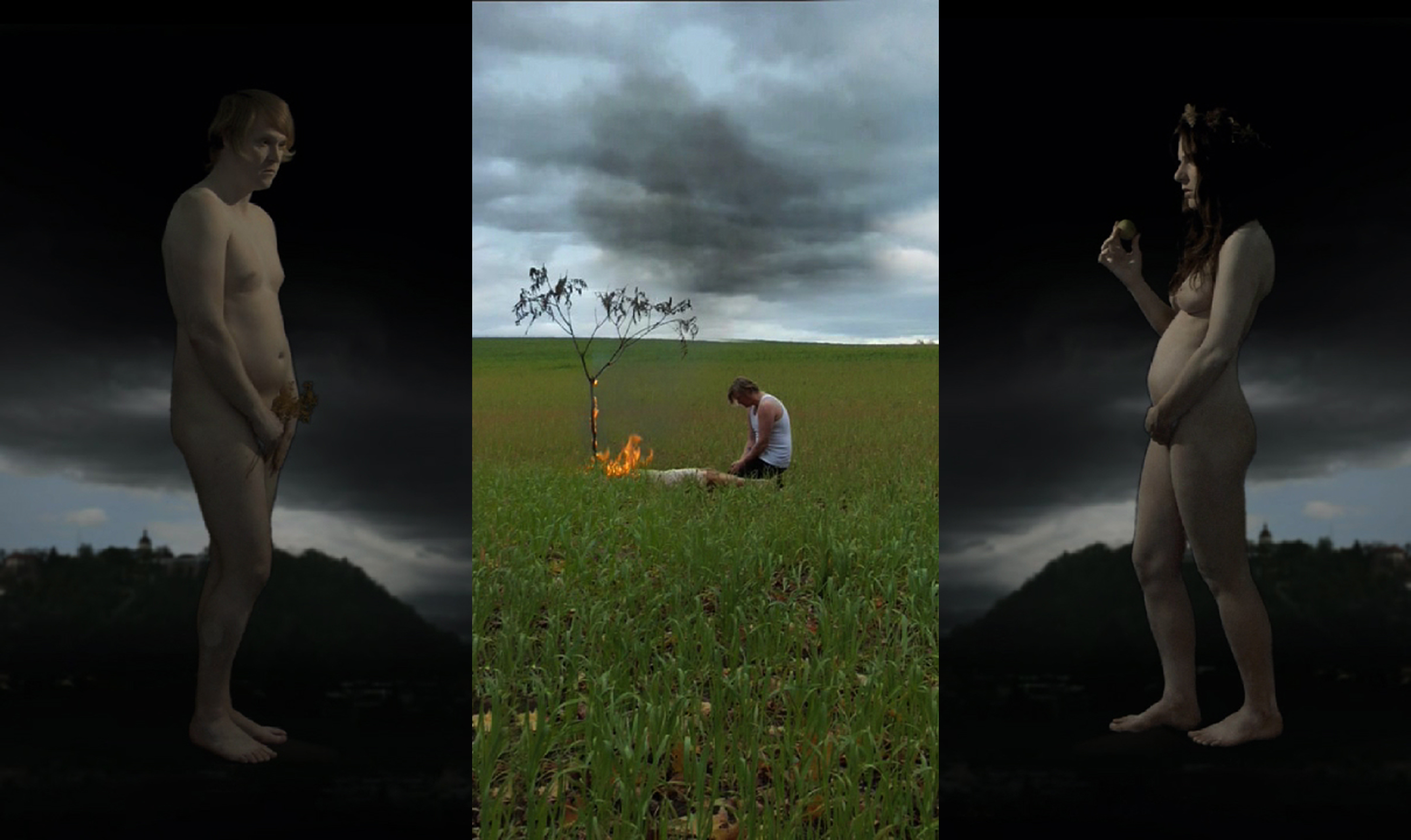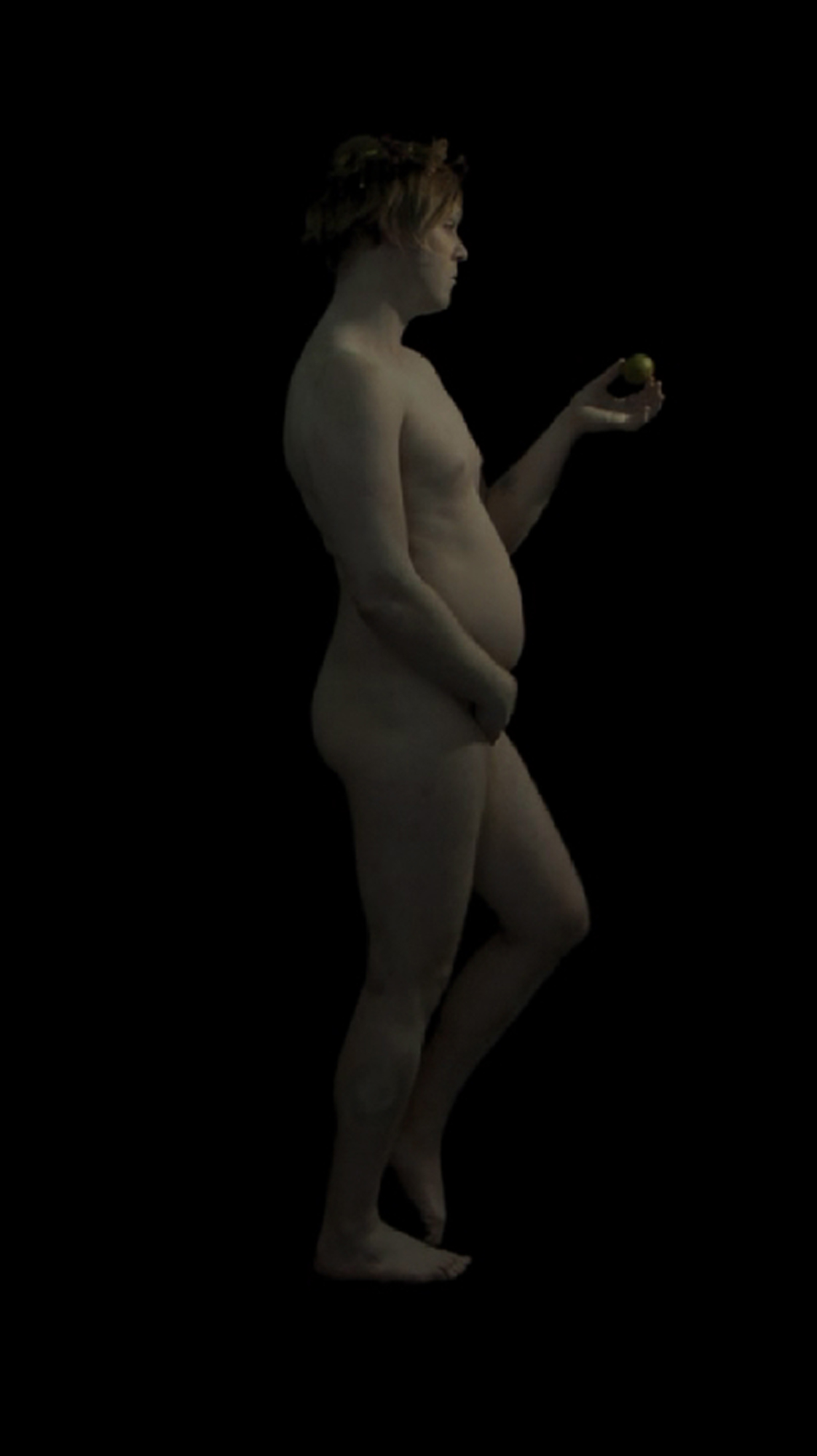
Nicholas and Sheila Pye, still from The Coronation, 3-channel video/still 2008. Courtesy of the Curator's Office and Nicholas and Sheila Pye.
Museum volunteer Gerry Hendershot and Volunteer Coordinator Lisa Leinberger discuss The Coronation by Nicholas and Sheila Pye. The three-panel video work is installed in a gallery with Georges Rouault’s Tragic Landscape (from our permanent collection), creating a dialogue between the works in the latest installment of the Intersections series. It is on view through May 8.
Gerry: I believe I have decoded the Pye installation. It’s based on a 15th century altarpiece by Jan van Eyck.
Lisa: You are so right!

Hubert van Eyck, completed by Jan van Eyck, Ghent Altarpiece, c. 1423-32 (Ghent, St. Bavo)
Gerry: Rouault described himself as “a Gothic artist… Preoccupied with sinister backgrounds and besetting sins,” which abound in both the Van Eyck and Pye pieces. I saw that altarpiece years ago, and it surfaced to my consciousness when I saw the Pye triptych.
Lisa: I’ve read that Rouault cited the Matthias Grünewald altarpiece as his reference. The Pye installation is a three-part altarpiece similar to the Grünewald Isenheim Altarpiece (1506-1515), as well. I’m pleased you were able to relate your memories to the piece.
Gerry: Is the Graz landscape in the distance of the side panels from a painting?
Lisa: It was filmed when the Pyes were on a study grant there last year. I was just there myself a few weeks ago. It was a sunny day, so I was not aware of the brooding view captured in the video.
Gerry: I interpret Rouault’s Tragic Landscape as a crucifixion scene, but I haven’t been able to find anything that confirms that. From certain angles, I think I see three crosses.

Georges Rouault, Tragic Landscape, 1930. Ink and gouache on paper. 18 3/4 x 23 1/2 in. The Phillips Collection
Lisa: Rouault was once quoted as saying, “My life is back in the age of cathedrals.” He was a deeply religious man, so your interpretation could be correct.
Gerry: The Van Eyck altarpiece shows Adam and Eve in poses nearly identical to those in the Pye piece. I am familiar with the Grünewald crucifixion scene, not in the altarpiece, but in a small copy (by Grünewald) that’s in the National Gallery of Art. I looked at some of the several Adam and Eve paintings by Grünewald online. There are interesting subtle variations in the different versions, which I interpret as different takes on the male/female relationship in the biblical story of man’s fall from grace – is the culpability hers, his, or shared?

Nicholas and Sheila Pye, detail from The Coronoation, 3-channel video/still 2008. Courtesy of the Curator's Office and Nicholas and Sheila Pye.
The Pyes may be dealing with that or related issues in the two side panels of their work, in which they are first walking toward one another, she holding an “apple”; then they are walking apart, and he is holding the “apple”. I learned that in Van Eyck’s version, Eve is actually holding a citrus fruit named, in French, “pomme d’Adam,” and in English, “Adam’s apple.” These names are, of course, references to masculine gender. So, what’s happening when Adam takes the apple from Eve? And, at the same time, he acquires a distended abdomen suggesting pregnancy. Hm…
Lisa: I think you might be on the right path, Gerry. The fruit in question is a lime; I asked Nicholas Pye when he was here.
Gerry: I’ve become fascinated by the “intersections” between these two works, the Pyes and the Rouault, which I guess is what this project is intended to provoke!

Pingback: The Results of our Experiment « The Experiment Station